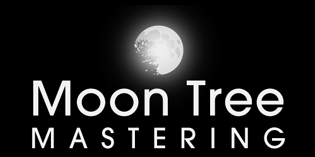In today’s dynamic and competitive music industry, it’s essential for vocalists to explore innovative ways to stand out and captivate their audience. One powerful tool that can enhance your vocal performance is the use of vocal effects. Whether you’re a singer, podcaster, or public speaker, incorporating vocal effects into your repertoire can add depth, texture, and a touch of magic to your voice. In this article, we will dive into the world of vocal effects, exploring their various types, how to use them effectively, and tips to make your vocals truly shine.
Understanding Vocal Effects
Vocal effects refer to the manipulation of a voice using audio processors and digital effects to alter its sound characteristics. These effects can range from subtle enhancements to radical transformations, allowing you to explore new sonic territories. Some common vocal effects include reverb, delay, chorus, flanger, pitch correction, and distortion. Each effect adds its unique color and flavor to your voice, enabling you to express yourself creatively and achieve a desired artistic vision.
Choosing the Right Vocal Effects
When selecting vocal effects, it’s crucial to consider the style of music or content you’re creating. Different effects work better in specific genres or situations. For example, reverb can create a spacious and ethereal atmosphere, ideal for ballads or ambient tracks. On the other hand, distortion might be more suitable for rock or heavy metal vocals, adding grit and edge to your voice. Experimentation is key to finding the perfect combination of effects that complement your unique style and artistic vision.
Using Vocal Effects: Tips and Techniques
Start with subtlety: It’s important to use vocal effects in moderation, especially if you’re new to them. Begin by applying subtle adjustments to enhance your voice without overpowering it. As you gain confidence and experience, you can gradually explore more daring effects.
Experiment with presets: Many audio processors and software come with preset vocal effects settings. These presets serve as a great starting point, allowing you to audition different sounds and styles. Customize them to suit your voice and the mood of your performance.
Layer effects for depth: Don’t limit yourself to a single effect. Layering multiple effects can create a richer and more unique vocal texture. However, ensure that each effect contributes to the overall sound without muddying the mix.
Use automation: Automation is a powerful technique to add variation and dynamics to your vocal effects. By adjusting parameters such as wet/dry mix, intensity, or modulation depth at specific points in your performance, you can create captivating moments that draw the listener’s attention.
Mixing Vocal Effects
Effective mixing of vocal effects is crucial to achieving a polished and professional sound. Here are some tips to help you in the process:
Pay attention to levels: Ensure that the volume of your vocal effects doesn’t overpower your lead vocals. Strike a balance so that the effects enhance your voice without distracting from it.
EQ and compression: Apply equalization and compression to your vocal effects to ensure they sit well in the mix. EQ can help remove unwanted frequencies, while compression can control dynamic range and add consistency to the effects.
Panning and stereo imaging: Experiment with panning your vocal effects to create a sense of space. For instance, you can pan a delayed vocal to one side, providing a wider stereo image and adding depth to your mix.
Conclusion
Incorporating vocal effects into your performances can elevate your artistry and make your voice truly memorable. Remember, it’s essential to choose the right effects for your genre, experiment with different settings, and use them tastefully to enhance your voice without overshadowing it. With practice and creativity, you’ll unlock new dimensions of your vocal abilities and create captivating performances that leave a lasting impact on your audience.
FAQs
Can vocal effects fix pitch issues?
While pitch correction effects can help subtly correct minor pitch inaccuracies, they are not a substitute for proper vocal technique and training. It’s always advisable to work on improving your vocal skills rather than relying solely on pitch correction.
Are vocal effects only for singers?
No, vocal effects are not limited to singers. They can be used by podcasters, voice-over artists, and public speakers to add personality and enhance the overall impact of their voice recordings.
What software or equipment do I need to use vocal effects?
There are various software plugins and dedicated hardware processors available to apply vocal effects. Popular choices include plugins like Antares Auto-Tune, Waves Vocal Rider, and hardware units like the TC-Helicon VoiceLive series.
Can I use vocal effects in live performances?
Yes, many vocal effects processors are designed for live performances. They can be connected to a microphone or audio interface and used in real-time during concerts or gigs.
Is it necessary to use vocal effects in every song or performance?
The use of vocal effects depends on the artistic vision and style of your music or content. Some songs may benefit from subtle effects, while others may call for more pronounced or experimental use. Trust your ears and use effects judiciously to serve the song and convey the desired emotion.
Remember, the key to effectively using vocal effects is to experiment, trust your instincts, and let your creativity soar. Embrace the power of these tools to shape and transform your voice, allowing you to deliver performances that captivate and inspire.
